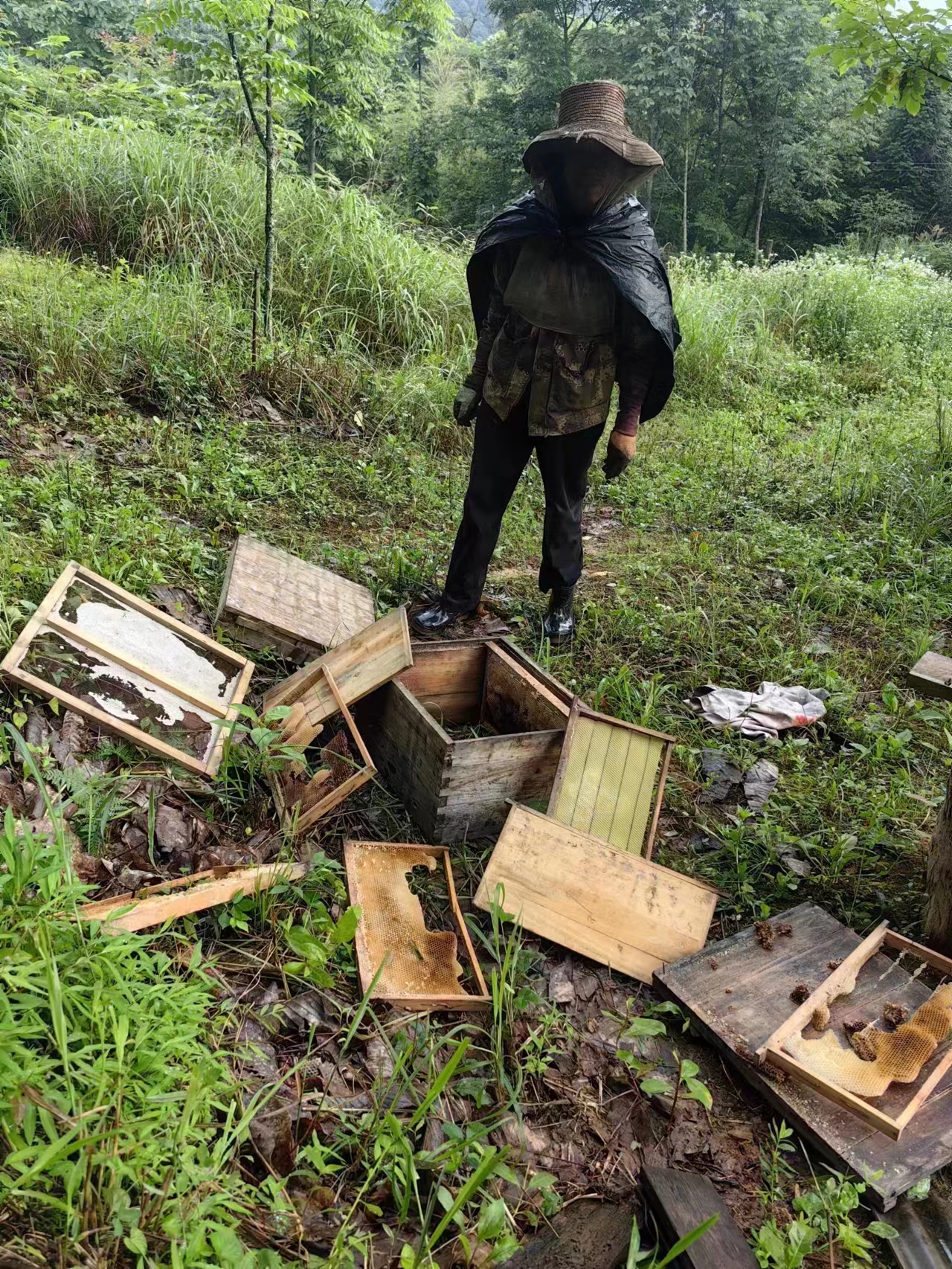Launched the special black bear survey
Infrared camera traps obtained photographs of a black bear
Infrared camera traps obtained photographs of a black bear in upright posture.
The Houhe NNR applied for financial support through multiple channels, and the black bear survey project secured 300,000 yuan from the "Green Mountains Public Welfare Nature Conservation Initiative" fund. Subsequently, scientific staff from the Houhe NNR selected 20 high-frequency black bear occurrence sites to deploy infrared camera traps, installing three infrared cameras at each trap point to capture individual identification markers of black bears. Simultaneously, they collected bear feces, hair, and other trace information to assist in population analysis. Using infrared camera traps, they identified and marked a portion of captured individuals, estimated the black bear population size in Houhe via mark-recapture methods, and concurrently conducted surveys through semi-structured interviews, completing a total of 193 questionnaires.
1.Sufficient funding ensured carrying out team investigations, study tours, and fieldwork;
2.Invited relevant experts from the Chinese Academy of Forestry's Forest Ecology and Environment Institute for on-site guidance, enabling reserve researchers to master relatively mature survey and research techniques and methods;
3.An enthusiastic research team ensured the effectiveness of the work;
4.Full cooperation from community residents who truthfully provided feedback completed the questionnaire surveys;
5.The black bear species possesses distinctive traits – the V-shaped chest patch can serve as an identification feature for individuals.
1.Invited community residents familiar with mountainous terrain to participate in fieldwork, and conducted initial technical training for field staff at the project's outset;
2.During the preparatory phase, utilized monitoring data from past years for preliminary analysis, laying the foundation for subsequent field deployment planning;
3.Community survey sample size and representativeness were limited—193 questionnaires could reflect some issues, but coverage of more villages and diverse stakeholder groups (farmers, tourism practitioners, conservation staff) would yield more comprehensive data;
4.Integration of multi-year monitoring data and long-term monitoring mechanisms need improvement; current data primarily supports short-term research; recommends establishing a black bear population dynamics database, combining GIS technology to analyze human-bear conflict hotspots, providing basis for long-term conservation.
